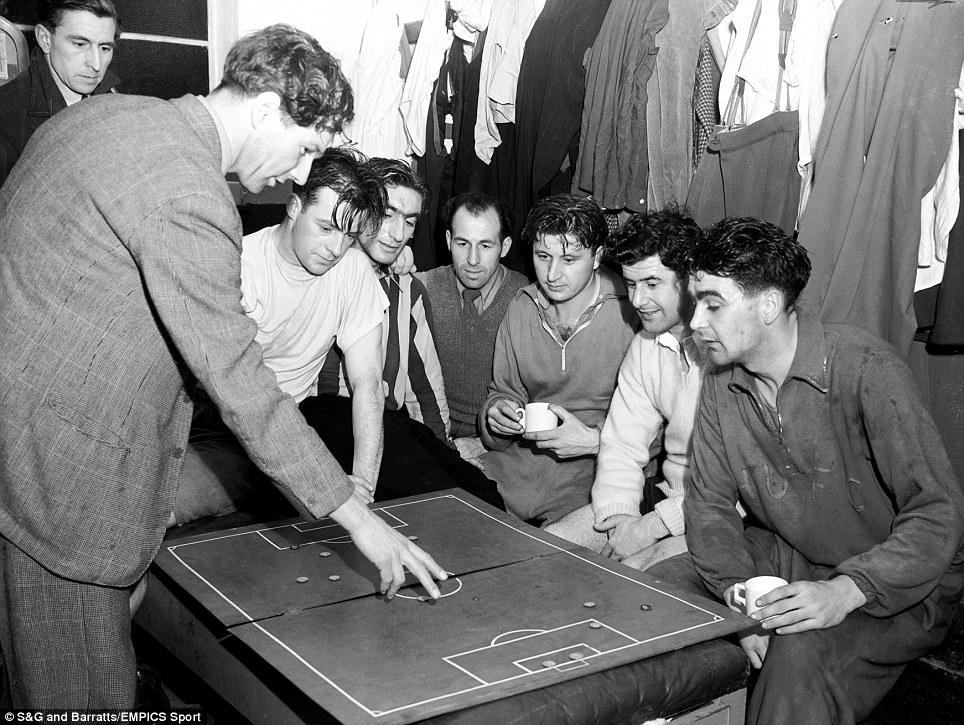
Setting up your defence in FM19: Dynamo Project Tactic Creation Step 1
I love summer break. But I’m not nostalgic for those days when we had a break from school and all worries. No, unfortunately as much as I would love to, this is not about that. Rather, I love the summer preseason break in Football Manager. It is a great time to take stock of what worked/not worked in the previous season. And start planning for the challenges of the next. For me all tactic building happens in preseason. Ideally only a few tweaks are needed once Fall rolls around. I planned this article as the first of three parts. In the three pieces I intend to go step-by-step through the process of creating a 3-5-2 tactic. Everything from examining the strengths of my players in the the three units: defence, transition and offense. The Step 1 will look at the defence unit and how it fits within the tactic. Setting up your defence in FM19.
It is June 2020 in my Dynamo Kyiv save. I just finished in 2nd place, two seasons in a row. Now is the best time to take a step back and see things in a better perspective. There are obviously some things that we are doing right:
- Playing high-defensive line, possession football (my goal from the start). We have consistently been getting over 50% possession in both our domestic and continental matches.
- Playing attacking football that is also defensively solid in the back – One of the staples of Lobanovskyi’s system. Over the last two seasons in all competitions I only conceded 19 goals while scoring 155 times.
- Getting into Champions League every year (as seen in the positive effect on our finances and continuously generous transfer budgets).
- Developing Youth – you saw in previous Dynamo Project entries, I was lucky in bringing regens through our academy (Golden Generation!). We also developed the youths we started with by giving them First Team game time (finding positives during a crisis).
- Maintaining Culture of Loyalty – succeeded in keeping all the above said youth at the club. None of my youngsters, including the meteoric Viktor Tsygankov (who media has compared to young Gareth Bale) were poached.

And now some things that that I am not so proud of:
- Not being able to beat Shakhtar to domestic title – not much can be said here. I just have to keep trying to improve the team and tactics.
- Defensive coverage in “Big” games – I need to come up with how to concede less goals in important European games. Changing to a three man defence will hopefully help in this.
- Foreigners in the squad – One of the original rules for the save was a Ukrainian-only policy, like Bilbao’s Basque policy. Unfortunately, due to lack of adequate options from the academy, I have been forced to keep my starting foreign players. Since I decided to modify this rule, to allow players from Eastern European countries of the former Soviet Bloc. Provided they come through my youth academy via affiliates. I will not sign any foreign players from outside the club.
Part 1: Real-Life Inspirations

I never create my tactics in a vacuum, without real-life context. Initially, the driving force behind starting this save was trying to recreate Lobanovskyi’s tactical system. Then I realized that the online source materials that initially inspired me was too vague to give an translation in the game. Sure, I saw my team playing a high pressing 4-4-2 (because that is what many claim Lobanovskyi used) but then as game time started adding up, my vision became less and less defined. I started trying to artificially impose onto my squad the way I saw Liverpool or RB Leipzig playing. All in a headless drive for results. I sought to play pressing football in a way that I thought would win/exploit the game and not because that was the natural way for my squad to play or even the most enjoyable way.
So now I am going to take a step back to square one, hit the reset button and do what I should have done from the start. That is to take a look at the players at my disposal and try to see what system will get the best out of their varied skills. This will hopefully give a clearer vision of what I want from my tactic.
For clear inspiration I find myself turning most often to Tifo’s wonderful videos. The beauty of Tifo is in how he is able to break down some very complex tactical ideas and explain them in a visually appealing and concise way for even the complete tactical initiates among us to understand easily.
The video above has given me the general base for what I would like to see in my Dynamo tactic. That is three defenders in the back for that solid defensive core combined with at least two forwards upfront to maintain our offensive bite. You can see just how well this could work in Tifo’s latest clip about Eintracht Frankfurt’s 3-5-2 tactic. I already wrote about my interpretation of Frankfurt’s formation in my recent piece highlighting the role of a Striker (using the example of Luka Jovic). You can visit that article here if you are interested in how I was able to recreate the formation of one of the most dangerous clubs in Bundesliga at the moment. I’m including Tifo’s video which I referenced for those not familiar with that article.
So I am basically looking to integrate what I learnt from my experiment with Frankfurt into my Dynamo Kyiv series. So it might not be necessarily the formation that Lobanovskyi used but it should keep the spirit of Lobanovskyi intact. That is winning games through collective hard work and teamwork, defending and attacking aggressively, and running your socks off for the full ninety minutes.
Part 2: Stoppers Ahead!
So let us start with the back three. From the general attribute overview one can see that Dynamo is blessed with quick defenders in Burda and Kedziora (converted from a fullback). These two I can rely on as my two best stoppers to push up in a high defensive line, stopping the opposition before they get close to our penalty area. They are good at tackling and passing which is key in the high defensive line I intend to implement. Once they win the ball they should be in a good position to pass it quickly and accurately to the more creative central defender or to my midfield.
As with Frankfurt, I’m looking for quick transitions from defence up to midfield and then even quicker to our deadly trio of finishers. Unlike at the start of my save, I am not as concerned about playing an aggressive Gegenpress. I rather prefer a fluid counter-attacking system with defenders starting higher up the field in order to smother opponent’s attacks early. For this I want my defence and midfield to keep their defensive shape, win the ball back quickly in a disciplined way and then try to send it to the strikers or wingbacks.


Our defenders’ mental attributes are very suitable to such a tactic as high values in Bravery, Concentration, Determination and Work Rate are essential for playing in a high defensive line. So a good start so far!
Part 4: Liberating the Play
The central defender role in the three men defence is still a bit of a mystery to me. I was hesitating between a traditional Ball-playing Defender and a more aggressive Libero (Support). Essentially, what I need from him is to act as a sort of deeper playmaker to help in transitioning the ball quicker towards our midfield (or even the strikers via killer passes). The kind of player I was looking for is one with good playmaking attributes like Passing, Technique, Vision, Anticipation and First Touch. His tackling, jumping and positioning are not be as important, as we have two stoppers backing him up defensively.

The the player I chose, while not a superstar, nevertheless checks off all the requirements. In fact he is a midfielder who I decided to play in this position because it is very difficult to find an elite playmaking defender for lower league team. Essentially, I am looking for a defence-oriented player “with license to carry the ball out, make long sweeping passes and generally act a catalyst for attacking as well as the spare man at the back”.
At first I was gravitating towards a libero role, but after testing the tactic more, I settled on Ball-Playing Defender because I did not like how Libero would venture up into midfield. Since I need my wingbacks to be more aggressive (as you will see in my next article), I cannot afford to have gaps in my back three. Such gaps were created when my libero would lose the ball after dribbling into the midfield to look for passing options. I prefer the BPD’s tendency to launch defence-splitting through passes which can actually be quite devastating if he has good passing ability and vision.

After settling on the roles for the back three, the next natural step was to choose the right team instructions to make them play in the way I want.
I have always been a believer in using as little team instructions as possible. Rather it should be the choice of mentality and player roles (and in turn the resulting fluidity) should mainly govern how your team will play. I add specific team instructions as a way to fine-tune my existing tactical system, and not to create my tactic from the ground up.

So for my defensive out of possession instructions, I only add instructions to instruct my back three to play much higher up since it is not something that I can instruct through their roles. The more urgent pressing was added to make the team more proactive in getting the ball back without going into full counterpress mode. As I start with a relatively low mentality (balanced), adding a few “more aggressive” instructions will make a big tactical impact.
I will explore the interaction between mentality and roles further in the next two parts about the Transition (midfield) and the Possession (offence) units of my tactic. By then the tactic will hopefully start to come together as I put more of its building blocks in place. So thanks for reading and please stay tuned for Part 2: Transition soon!
Follow Dictate The Game on Facebook and Twitter!
And here are other articles that you may be interested in: